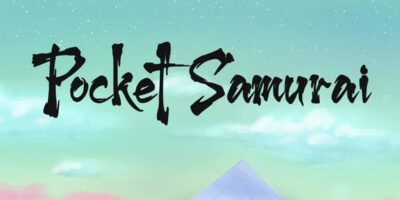WOLFENSTEIN II: THE NEW COLOSSUS was a colossal disappointment for me. Not since ALIENS: COLONIAL MARINES have my hopes for a video game been so ruthlessly shattered. If you played and enjoyed preceding entries THE NEW ORDER or THE OLD BLOOD, or even last year’s reimagined DOOM, you’ll probably feel similarly let down. There’s a lot of praise going around for THE NEW COLOSSUS’s Nazi-killing narrative, especially in light of the current political climate, but it’s hard to enjoy the tale when the foundations it’s built on are so fundamentally broken. But beyond bad game design, WOLFENSTEIN reeks of the same corporate meddling that has soured so many other shooters from this year.
For those unfamiliar with MachineGames’ take on the classic shooter franchise: you play as all-American hero B.J. Blazkowicz who, after being rendered comatose during a battle in WWII, awakens in a 1961 where Nazis rule the world. The first game saw B.J. leap out of bed to kill Nazis across Europe, under the Atlantic, and even on the moon. Complications resulting from being grenaded by the final boss sees THE NEW COLOSSUS open with B.J. once more waking from a coma, this time after a much shorter rest, to go on a rampage throughout Nazi-occupied America. Along the way, B.J. gathers up a motley cast of resistance fighters, including fellow WWII vets, Black Panthers, Communists, and even Nazi turncoats to aid him in his fight against the Third Reich.
There’s a lot to like about THE NEW COLOSSUS’s cinematic campaign: the awesome set pieces, the explosive arsenal of weapons, and alternate history world-building that puts THE MAN IN THE HIGH CASTLE to shame. More than most games in recent memory, you root for the heroes and despise the villains. Most welcome is the return of Mick Gordon’s pulse-pounding, roller coaster of a score that easily matches his work with the DOOM soundtrack.
The rub is that following the story requires you to play the game. Despite being the latest entry of a series that could best be described as “simply entertaining,” actually playing THE NEW COLOSSUS isn’t very fun. The controls can’t be faulted; B.J. handles smoothly, and has several new tricks to boot, from an aerial ground pound you can goomba-stomp Nazis with, to the hilarious ability to suck in your gut and crawl through impossibly narrow drainage pipes like you’re The Blob. The arsenal can’t be blamed, either; everything from your starting submachine gun to the two-handed, four-barrelled buckshot hose that is the Hammergewehr is pure bliss to fire. You’re more powerful than ever in THE NEW COLOSSUS, which make it doubly annoying that the game is so game-breakingly difficult.
The Nazis you fight are not smart, and they are not tough. Even the largest mechanized foes will drop in seconds if you’re smart about which upgrades you take. No, they are nail-bitingly hard foes because, even on the easier difficulties, they deal an absolutely ludicrous amount of damage. A single Nazi with a peashooter pistol can take you down from a fully supercharged health bar to a critical state in only a couple of shots; anything more substantial, or even just one more similarly equipped soldier, will tear you to shreds in a heartbeat.
I play most modern games either on their hardest or next hardest difficulty setting, and regardless of how challenging the ensuing struggle is, I always manage to tough it out in the end. I started THE NEW COLOSSUS on the “I am Death Incarnate!” setting, which I breezed through in previous titles, only to find it almost impossible to progress past THE NEW COLOSSUS’s opening firefight. By the end of my playthrough, I had to lower the difficulty not once, not twice, but three times, which, aside from bruising this writer’s ego, should be a sign of how miserable the experience was.

You can tell this is a promotional screenshot because B.J. hasn’t been deleted from existence already
THE NEW ORDER and THE OLD BLOOD prided themselves on the variety of playstyles open to the player. If you really wanted to, you could play them like a more run-of-the-mill FPS, peeking over cover to line up headshots. Alternatively, you could take the stealthy route, creeping through air ducts to quietly assassinate officers before they could raise the alarm, or just run in guns blazing, shotgun in each hand, and blow away any Nazi that dared draw breath in your vicinity.
In THE NEW COLOSSUS, these possibilities are situational at best and suicidal at worst. One of trade-offs for the Nazi’s subhuman AI is an almost preternatural, and unpredictable, ability to detect you and alert their friends. It doesn’t even matter if they’re taking an axe to the back of the head, these assholes still find ways to telepathically signal your location to every guard on the map. As for the Rambo route, well, at least it’s a quicker path to your last save point than going into the pause menu and manually loading it yourself.
Outside of a select few scenarios, the best tactic is to hang back in a corridor at the start of an area, let the Nazis know you’re there, and play assault rifle whack-a-mole as they march single-file into your killzone. It’s not fun, but neither is being shot to pieces ad infinitum for trying to play the game as intended. There are games that are meant to not only challenge, but to test the very core of the player. In cases where this is done right, like CUPHEAD, overcoming a fearsome foe can feel immensely satisfying. THE NEW COLOSSUS is not that kind of game. Deaths feel unearned, victories feel hollow, and nothing works the way that it should.

If my consternation with this game could be weaponized, I’d need my own Nuremberg Trial
There are plenty of other issues that plague THE NEW COLOSSUS, from the utter failure to direct the player’s attention to where it needs to be, to weird tonal shifts that fall flat, to B.J.’s sudden in-game mutism, to the sadistically unfair level design, to anything that involves swimming. I could fill a tome with my frustrations on how MachineGames managed to bafflingly drop the ball after rolling out two other Wolfensteins that are Good with a capital G. Even if I did, it still wouldn’t cover everything that is wrong with THE NEW COLOSSUS. That’s because, despite all of the blunders made by the developers, there are even more insidious decisions that could only have come from higher up.
The resistance hideout that you returned to between missions in THE NEW ORDER had a few collectibles to find, but that was about it. THE OLD BLOOD omitted such safezones entirely. The result was a pair of lightning-paced campaigns that always kept the player in B.J.’s head. There’s a cutscene at the end of a mission in THE NEW ORDER where, after robbing a train in Gibraltar, you disguise as a Nazi, infiltrate a spaceport in London, and fly to the moon. This is all communicated in the span of 15 seconds, jaw-dropping when even other “cinematic” titles like GTA will require you to manually drive across the map to reach a meeting spot.
WOLFENSTEIN II has a more . . . involved hubworld. The hijacked U-boat “Eva’s Hammer” that serves as your staging point is filled to the brim, and then some, with pointless distractions. There’s collectibles, yes, but also generic NPCs that are constantly yammering at you, a shooting range, an obstacle course, score attack missions, DLC story missions (which thoughtfully include a “BUY NOW” button), a war map that you can (and sometimes must) use to revisit previous levels, a pig that you can feed, and a fully functioning arcade machine with a reskin of WOLFENSTEIN 3D installed in it.

Welcome to Purgatory
Each of these aforementioned activities are either menial and/or suffer from the same problems as the main game. More egregiously, they serve to steer you away from progressing the campaign, which in turn keeps you away from the only part of THE NEW COLOSSUS that matters: the story. Not only that, they actively serve to sabotage the urgency of the plot. One cutscene saw my comrade breathlessly informing me that the Nazis are killing everybody in New Orleans, and that we have to head there at full speed to stop them. My B.J. then spent the next three hours backtrack to New York City for a pair of side quests, take a detour to a bunker underneath Roswell, New Mexico to search for vinyl records, return to the U-boat to play with some new upgrades in the simulator, and only then finally plod over to the Big Easy, somehow in time to save everybody from the Fuhrer’s wrath.
Compared to that interplanetary transition in THE NEW ORDER, just the possibility of my narrative sidetrack is unbelievable. Neither THE NEW ORDER nor THE OLD BLOOD ever went off-topic for that long. The closest comparison I can think of to it is THE EVIL WITHIN 2’s safe rooms with their host of extracurricular activities, or perhaps FALLOUT 4’s settlement system, which tasked players with not only painstakingly constructing their post-apocalyptic villages, but regularly defending them from bandit raids (remember, this was a game where the main plot revolved around you frantically searching for your kidnapped son).

“Look on the bright side: at least Shaun will have a safe home to return to, whenever I find him.”
Japanese survival-horrors and massive, open-world RPGs would appear to have very little in common with each other, let alone with a gung-ho action FPS like THE NEW COLOSSUS. The only meaningful connection is . . . that they’re all published by Bethesda Softworks LLC. Like any patron for the arts, video publishers are known to have a hand in what makes it into the final product, and mid-sized AAA publishers like Bethesda (however “mid” the house of SKYRIM can be considered, anyway) are no exception. Most gamers are familiar with the “Ubisoft Model” of game development by this point: sprawling open worlds populated by towers that reveal additional activities once you climb them. Whether it’s Far Cry, WATCH_DOGS, or Assassin’s Creed, all of Ubi’s single player titles share this element. Even GHOST RECON: WILDLANDS’ newly added PVP mode features towers that reveal all enemy team members once scaled. It’s been happening for years now, but only recently has the “Bethesda Model” become readily apparent.
Bethesda’s answer to Ubisoft’s activity towers is the hidden clubhouse. It’s obvious that something resonated with the bigwigs in their Maryland office with the idea of building an amusement park in the middle of an irradiated hellscape, because the clubhouse has become a staple in their games ever since FALLOUT 4. The clubhouse is a place for the player to return to between stretches of story, safely sequestered away from any conflict. At the clubhouse, the player can take five, manage their inventory, and chat up the supporting cast to glean insight on their situation. There are activities to do here that wouldn’t fit anywhere else in the game, and everything from challenge to (the typically grim) atmosphere can be lifted here. It’s the behind-the-scenes segment following an episode of primetime TV, or the bonus features on a collector’s edition Blu-ray.
This is like a blooper reel, right?
I’m not necessarily opposed to these template designs. While too many games using the same model absolutely kills diversity, these features do have their uses. The safe room sideshows in THE EVIL WITHIN 2, for example, offer much-needed levity and relief that was lacking in the first game. Even when the clubhouse’s inclusion brings nothing new to the table, they can at least remain harmless. The hideouts in the Dishonored series are tastefully implemented, never overstaying their welcome. The settlements of FALLOUT 4, while undeniably created as padding, exist within a leviathan of a game that already relies on procedural content and extensive questlines that are designed to suck up days of your life to complete.
What really worries me about the trend is how haphazardly the clubhouse is utilized. Every Ubisoft game needs towers, so obviously every Bethesda game needs a clubhouse. The difference is that Ubisoft’s main lineup (Far Cry, WATCH_DOGS, Assassin’s Creed) is composed entirely of open-world action games that benefit from focal points. Bethesda’s properties are far more diverse in comparison. Fallout and The Elder Scrolls are also open-world, yes, but are far more elongated affairs as role-playing games, where the timeouts provided by the clubhouse can be afforded. The rest of the roster is far more niche. Survival-horror (The Evil Within) and stealth (Dishonored) are about as far away from mainstream as you can get, but they fortuitously share the deliberate pacing that permits break time.

“There’s always a lighthouse, there’s always a publisher, there’s always a gimmick.”
Wolfenstein does not fit this bill. The great appeal about the series was how it was a zero-filler, flat-out race to the finish, in stark contrast to most shooters on the market. THE NEW COLOSSUS is a bad shooter, but it could have at least been a bad shooter that was well-paced. THE OLD BLOOD had score attack levels as well, but was tactful enough to relegate them to the main menu, rather than use them as speed bumps in the campaign. THE NEW COLOSSUS’s U-boat clubhouse has no right to exist within a Wolfenstein game, but because Bethesda is filling the coffers, it must.
But what if THE NEW COLOSSUS was good? What if a perfectly fine game was ruined because Bethesda forced in an unnecessary feature? Would people even enjoy the inevitable DOOM sequel if you returned to Hell between each bloodsoaked mission to throw darts with demons? Gimmicks have a time and a place, but when publishers start using them as playable watermarks, they can easily jeopardize what would otherwise be a masterpiece.
You can bet that Bethesda is taking notes from the reception of THE NEW COLOSSUS to give to MachineGames in order to fine-tune the next installment of the franchise. The story is good, so expand on narrative and add to the cutscene budget. The difficulty balance sucks, so adjust damage scaling and increase cover placement. The soundtrack rocks, so keep paying Mick Gordon. These are the comments I keep hearing in reviews for the game, but few seem to share my main concern, which is the incongruity of Bethesda’s newfound gimmick with the game that relies on the publisher to get made. I can only hope more people are as alarmed by this development as I am, lest corporate strong-arming further complicates creative processes in the game industry.
















Comments